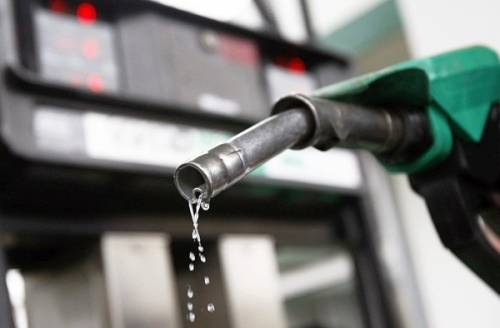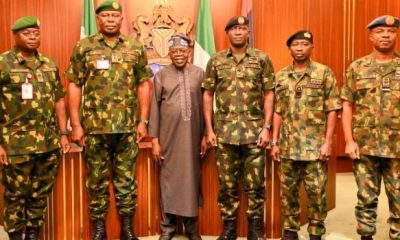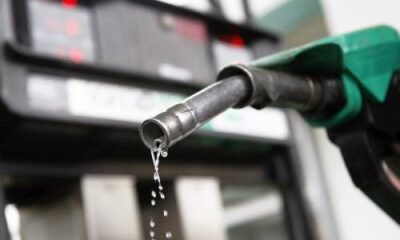News
Fuel Subsidy: FG May Pay N1.68tn As Marketers Forecast N900/liter

The Federal Government may spend about N1.68tn as subsidy on Premium Motor Spirit, popularly called petrol, from September to December this year, an analysis of data provided by oil marketers and the sector has shown.
PMS dealers stated on Thursday that the pump price of petrol should be between N890 to N900/litre based on the fall of the naira against the United States dollar and the surge in the price of crude in the international market.
Petrol currently sells at between N598 and N617/litre depending on the location of purchase, fuelling suspicion that the commodity is being subsidised by the Federal Government.
Subsidy
A graphic illustration of the palliative provided by the Federal Government to cushion the effect of subsidy removal
The government and the NNPCL have not officially admitted that subsidy on petrol has been reintroduced. President Bola Tinubu had on May 29 announced ended the subsidy regime during his inaugural address.
The government subsidises PMS through the Nigerian National Petroleum Company Limited. NNPCL is the sole importer of PMS. Other marketers stopped PMS imports due to their inability to access foreign exchange.
The removal of subsidy led to an increase in the pump price of petrol from about N198/litre in May to the current rate of N617/litre. But the fall of the naira coupled with the rise in crude oil price have continued to mount pressure on the cost of PMS.
Dealers in the downstream oil sector explained that the cost of crude oil and the exchange rate of the naira-dollar accounted for over 80 per cent of the cost of PMS.
Brent crude, the global benchmark for oil, rose to about $95/barrel on Thursday. It had peaked to $97/barrel the preceding day, which was the highest figure in 2023.
Oil had started the year at about $82/barrel, dipped to $70/barrel in June, but traded above $94/barrel in the past week.
It was learnt on Thursday that the naira continued its downward trend after exchanging to the dollar at 980 on the parallel market on Wednesday.
A week earlier, the naira was exchanged to the dollar at 950/$.
However, on the FMDQ at the Investor & Exporter forex window, the naira appreciated slightly after closing at 770.71/$ on Wednesday from 776.76/$ on Tuesday.
The forex crisis and the recent rise in crude price, according to oil marketers, have made it impossible for petrol price to still remain at N617/litre. They insisted the government had quietly reintroduced fuel subsidy.
A media report on Thursday indicated the Federal Government paid N169.4bn subsidy in August, 2023.
Quoting a Federal Account Allocation Committee document, the report said the Nigerian Liquefied Natural Gas paid $275m as dividends to Nigeria via NNPCL.
NNPCL, according to the report, used $220m (N169.4bn at N770/$) out of the $275m to pay for the PMS subsidy in the review month.
“I told you earlier that there is no way that the government will sustain the price of petrol at N617/litre without paying subsidy on it, going by the continued fall of the naira,” the National Public Relations Officer, Independent Petroleum Marketers Association of Nigeria, Chief Chinedu Ukadike, told The PUNCH on Thursday.
He added, “The dollar is almost N990 at the parallel market currently, and you can see the effect of this on the pump price of diesel. Diesel is close to N1,000/litre, so the retail price of PMS should be around N890 to N900/litre.
“Therefore, it is better the government assists the masses by paying subsidy. From our records, in the United States, the super product or petrol is sold around $3.9, which is close to about N3,000/litre.
“The premium product is sold at about $2.89, which is over N2,000/litre. And if you check in other African countries you will find out that the product is being sold at between N1,200 and N1,500. But going by the forex rate in Nigeria, it should be around N900/litre.”
It was gathered that the subsidised ex-depot price of petrol as sold by NNPCL, was between N585 and N600 depending on area of purchase.
By subtracting the ex-depot cost of N600/litre from the projected unsubsidised rate of N890/litre, that the government may have been spending about N290/litre as subsidy currently.
In July, data from the Nigerian Midstream and Downstream Petroleum Regulatory Authority showed that between June 1 to June 28, 2023, which was described as the post-deregulation period, the total petrol consumption across the country was 1.36 billion litres, while the average daily consumption was put at 48.43 million litres.
With an average daily consumption of 48.43 million litres and an estimated subsidy of N290/litre, the government could be incurring N14.04bn as subsidy daily, while this could rise to N421.3bn monthly.
This could rise to as high as N1.68tn for the months of September, October, November and December 2023, should the naira continues its fall against the dollar and crude price maintains its upward surge.
-

 News4 days ago
News4 days agoOsun 2026: Action Alliance Elects Farinloye As Governorship Candidate, Pledges People-Centred Governance
-

 News4 days ago
News4 days agoFRSC To Prosecute Peller After Crash
-

 News5 days ago
News5 days agoNigeria’s Swift Benin Intervention, Detention of Air Force Personnel in Burkina Faso Spark Controversy
-

 News4 days ago
News4 days agoOsinbajo, Adeleke, Aregbesola Inaugurate N34bn UNIOSUN Medical Research And Training Hospital









